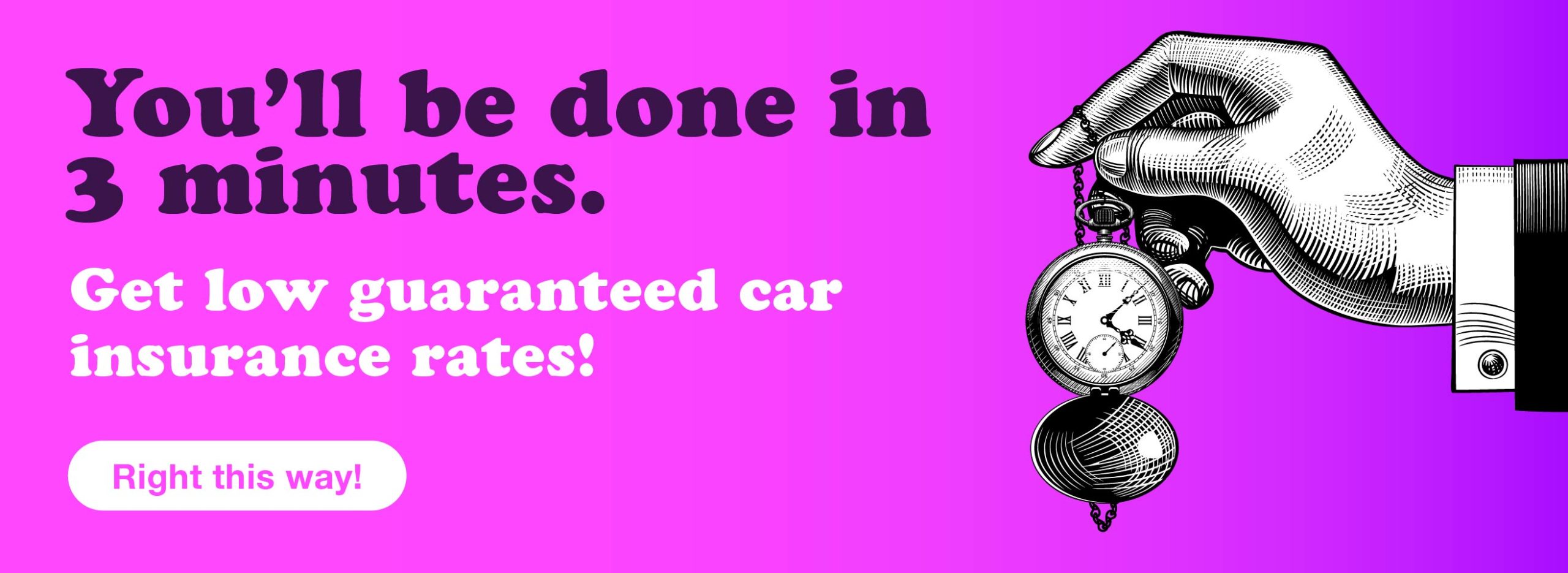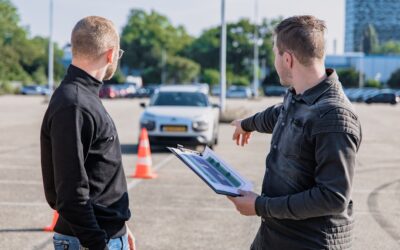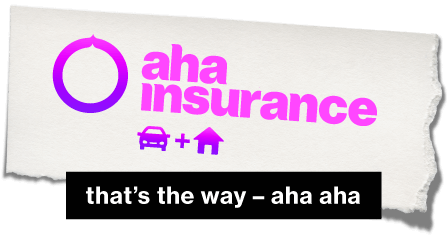Anyone who has tried to read their Ontario car insurance policy knows that there’s a ton of info crammed onto the pages of the contract, most of it written in hard-to-understand legalese.
In a bid to make car insurance less, uhm… insurancy, we’ll walk you through what’s in an Ontario auto insurance policy and describe what each section protects. We also invite you to visit our webpage to see how aha insurance can protect you and your vehicle.
As with everything to do with car insurance, the details can get tricky, so be sure to speak to an insurance professional if you have any specific questions about your coverage.
Mandatory car insurance in Ontario

The first thing you should know about car insurance coverage in Ontario is that every policy has the same standard wording. Each policyholder can customize their policy by selecting their coverage limits, optional endorsements and any optional coverages that apply to their unique circumstances, but auto insurance in Ontario is strictly controlled by the provincial government, and every car insurance company must use the same standard policy wording. This makes it easier to describe what car insurance covers, as we are all in the same boat (or car, I suppose).
Car insurance is only one of several requirements to own or drive a car in Ontario. The Official Ministry of Transportation (MTO) Handbook outlines all of the requirements required to put a car on the road in Ontario and to drive it safely.
There are two groupings of car insurance coverage in Ontario; mandatory and optional
In Ontario, it’s mandatory that every vehicle on the road has a car insurance policy that includes these coverages:
- Liability
- Statutory accident benefits
- Direct compensation – property damage
- Uninsured auto
There are also several enhancements, optional coverages and endorsements (insurance word for modifications to a policy) that are optional for you to purchase.
These include:
- Collision or upset
- Depreciation removal
- Comprehensive coverage
- Non-owned auto
- And lots of other coverages and enhancements to the mandatory items
So far, so good. But all that doesn’t really help you understand what your car insurance covers in Ontario, so we’ll take a bit of a deeper dive into each one. For more information on car insurance coverage, be sure to visit aha insurance online.
Third-party liability coverage
This mandatory coverage is probably the most important coverage in your policy. This responds when someone not in your vehicle is killed or injured, or their property is damaged due to something you or a driver of your car has done. Third-party liability will pay for any lawsuits against you and pay up to the limits on your policy (which is why you might want to discuss higher limits with your insurance broker).
In Ontario, you must buy $200,000 in third-party liability, but we strongly (strongly!) suggest you buy at least $1 million in coverage, preferably higher. In today’s dollars, it isn’t very unusual for car insurance lawsuit decisions to exceed $1 million and we’d hate for you to be personally on the hook for more than your coverage.
Statutory accident benefits coverage
If you or a passenger are hurt in a car accident, accident benefits will pay for supplemental medical costs that aren’t covered by OHIP along with rehab, attendants, and caregiver care. It will also replace some of your lost income if you’re unable to work after the accident.
Statutory benefits will provide you with coverage, regardless of who was at fault for the accident. A word of caution, though; the basic coverage limits may not be enough to cover all your needs following a serious accident. You should talk to your insurance broker about adding enhanced accident benefits coverage to your policy for maximum protection.
Direct compensation – Property damage coverage
When people wonder what their car insurance covers in Ontario, this is the section that often leads to the most confusion.
Direct compensation – property damage covers damage to your vehicle or its contents if an accident is caused by someone else. So, if someone were to rear end your vehicle through no fault of your own, this section would kick in and pay to repair the damage to your vehicle.
There are some really important things to understand though. First, the accident must have taken place in Ontario. Second, at least one other vehicle needs to be involved in the accident. Finally, at least one vehicle involved in the accident must be insured by a company that is licensed to sell insurance in Ontario. This means, it won’t protect you on your road trip through the US or if you’re involved in an accident in Ontario with a car from the US, if no other cars were involved.
For any other situation, you’ll need to rely on your own optional collision coverage, if you included this coverage on your policy (see below).
Uninsured automobile coverage
As the name suggests, this coverage steps in if you and your family are injured or killed by a hit-and-run driver or by someone who isn’t insured. It also covers damage to your vehicle caused by an identified (not a hit and run) uninsured driver.
Optional car insurance coverages

When discussing what does car insurance cover in Ontario, the mandatory coverage only tells part of the story. There are also a number of optional coverages that drivers should consider. Here we’ll discuss several of the most common optional coverages available in Ontario.
Collision or upset
Above, we discussed the mandatory direct compensation – property damage coverage that kicks in when your vehicle is in an accident, and you are not at fault. Collision or upset coverage responds when the driver of your vehicle is at fault. So, if you’re driving and take the ditch, hit a tree or roll over after hitting an icy patch of roadway, collision or upset coverage will pay to repair or replace your vehicle.
Similarly, if you hit another vehicle and it’s your fault, the coverage will step in to repair or replace your vehicle. This coverage can be vital if you own a newer or more expensive vehicle, as you won’t be left in a financial crisis if you’re involved in an accident.
Depreciation removal
Every vehicle depreciates in value as it gets older (sometimes, surprisingly quickly). When settling a car insurance claim, an adjuster will place a value on the vehicle at the time of the accident or loss. This can mean that following an accident where a car has been written off, the owner may receive a cheque for considerably less than what it will cost to replace the vehicle.
Depreciation removal coverage (known by us insurance nerds as an OPCF 43 endorsement) seeks to remedy that situation. By adding this endorsement to your policy, you “lock in” the value you’ll receive in the event of a total loss. So, if the $40,000 car you bought last spring is in an accident and can’t be repaired, you’ll receive a claims cheque for the full $40,000, ensuring that you can find an equal replacement without having to dig into your savings. Keep in mind that this coverage is only available for the first 2 years of car ownership with most insurers, and the coverage can only be added to new vehicles. In most cases, you cannot add the depreciation removal on used or older vehicles.
Comprehensive coverage
Generally speaking, comprehensive coverage pays for damage to your car when nobody is driving it. This includes vandalism as well as damage caused by falling or flying items such as ice hail or a badly thrown baseball. This coverage also comes into play if your car is stolen. A collision with a deer, moose etc. is also covered under comprehensive insurance, as it is classed as a flying object.
Non-owned auto
Officially called liability for damage to non-owned automobile(s) and other coverages (which is a bit of a mouthful), this coverage gives you physical damage coverage to vehicles that you may drive but don’t own. This might include a rental car or a vehicle that you have borrowed from a friend. Non-owned auto also includes third-party liability coverage as well as accident benefits coverage to cover any injury to the driver or passengers. There is also coverage in case you are involved in an accident with a driver who is not insured along with limited direct compensation-property damage coverage. This is a relatively inexpensive addition for anyone who regularly rents vehicles.
Other enhancements and additions
There are dozens of other enhancements, coverage extensions and additions you may want to consider when buying car insurance. The Ontario Financial Services Commission of Ontario lists them on their website, if you’re interested in all the options available.
There are also a number of different ways to package your car insurance policy – from a basic Specified Perils coverage that offers an economical version that only kicks in for certain types of losses, such as fire or theft, to a more expensive All Perils version that throws many of the options together into one package.
So what does auto insurance cover in Ontario? As you can see above, it can cover a lot. The mandatory coverages plus the right combination of optional coverage can protect your vehicle, your family and others in the event you experience an accident or other mishap along the road of life.
With so many options available, it might be hard to determine exactly what you need in an auto insurance policy. No worries, that’s why we’re here. Speak to one of our amazing aha insurance professionals to discuss what’s right for your unique circumstance.






